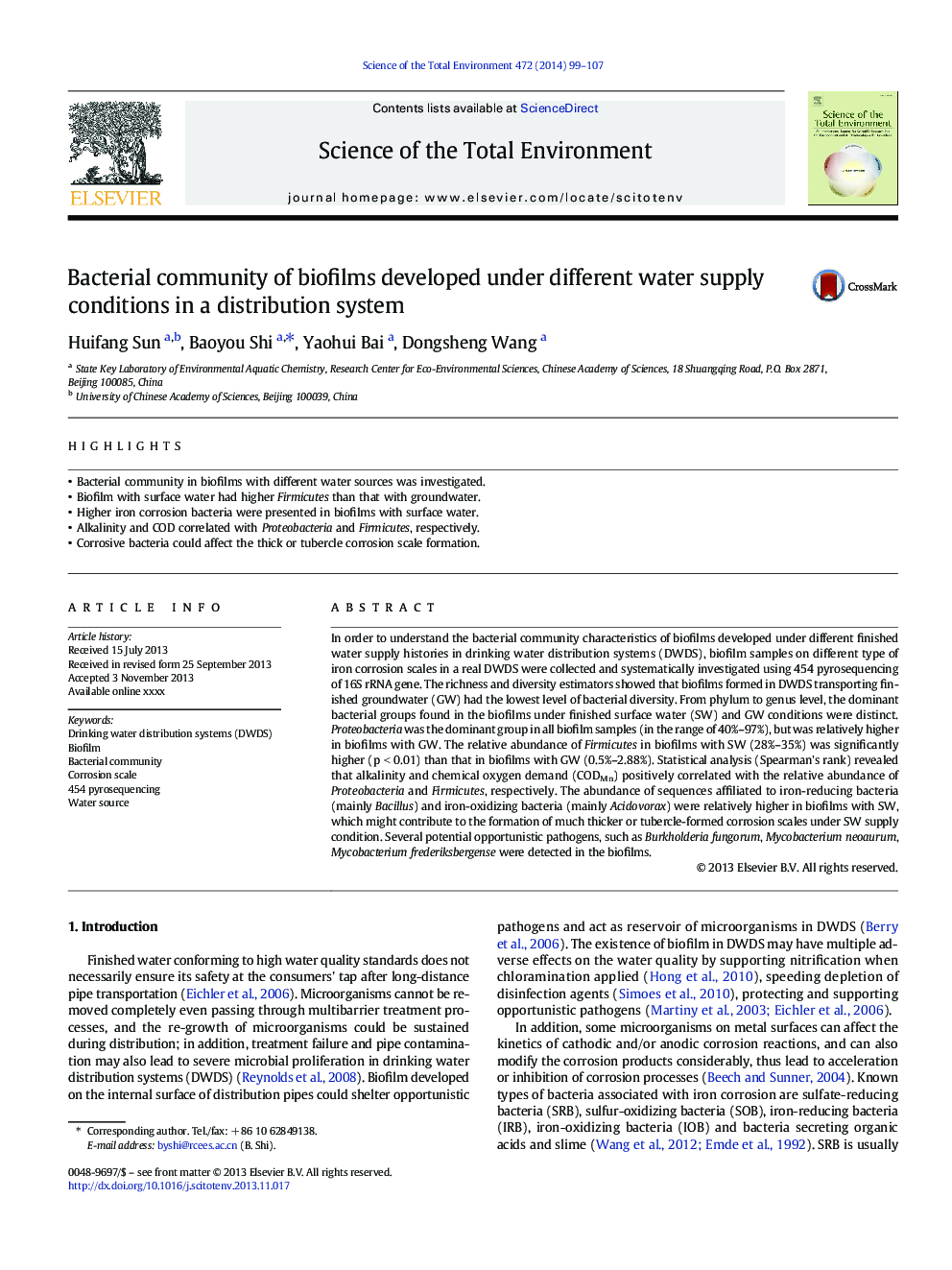| Article ID | Journal | Published Year | Pages | File Type |
|---|---|---|---|---|
| 6331057 | Science of The Total Environment | 2014 | 9 Pages |
Abstract
In order to understand the bacterial community characteristics of biofilms developed under different finished water supply histories in drinking water distribution systems (DWDS), biofilm samples on different type of iron corrosion scales in a real DWDS were collected and systematically investigated using 454 pyrosequencing of 16S rRNA gene. The richness and diversity estimators showed that biofilms formed in DWDS transporting finished groundwater (GW) had the lowest level of bacterial diversity. From phylum to genus level, the dominant bacterial groups found in the biofilms under finished surface water (SW) and GW conditions were distinct. Proteobacteria was the dominant group in all biofilm samples (in the range of 40%-97%), but was relatively higher in biofilms with GW. The relative abundance of Firmicutes in biofilms with SW (28%-35%) was significantly higher (p < 0.01) than that in biofilms with GW (0.5%-2.88%). Statistical analysis (Spearman's rank) revealed that alkalinity and chemical oxygen demand (CODMn) positively correlated with the relative abundance of Proteobacteria and Firmicutes, respectively. The abundance of sequences affiliated to iron-reducing bacteria (mainly Bacillus) and iron-oxidizing bacteria (mainly Acidovorax) were relatively higher in biofilms with SW, which might contribute to the formation of much thicker or tubercle-formed corrosion scales under SW supply condition. Several potential opportunistic pathogens, such as Burkholderia fungorum, Mycobacterium neoaurum, Mycobacterium frederiksbergense were detected in the biofilms.
Related Topics
Life Sciences
Environmental Science
Environmental Chemistry
Authors
Huifang Sun, Baoyou Shi, Yaohui Bai, Dongsheng Wang,
